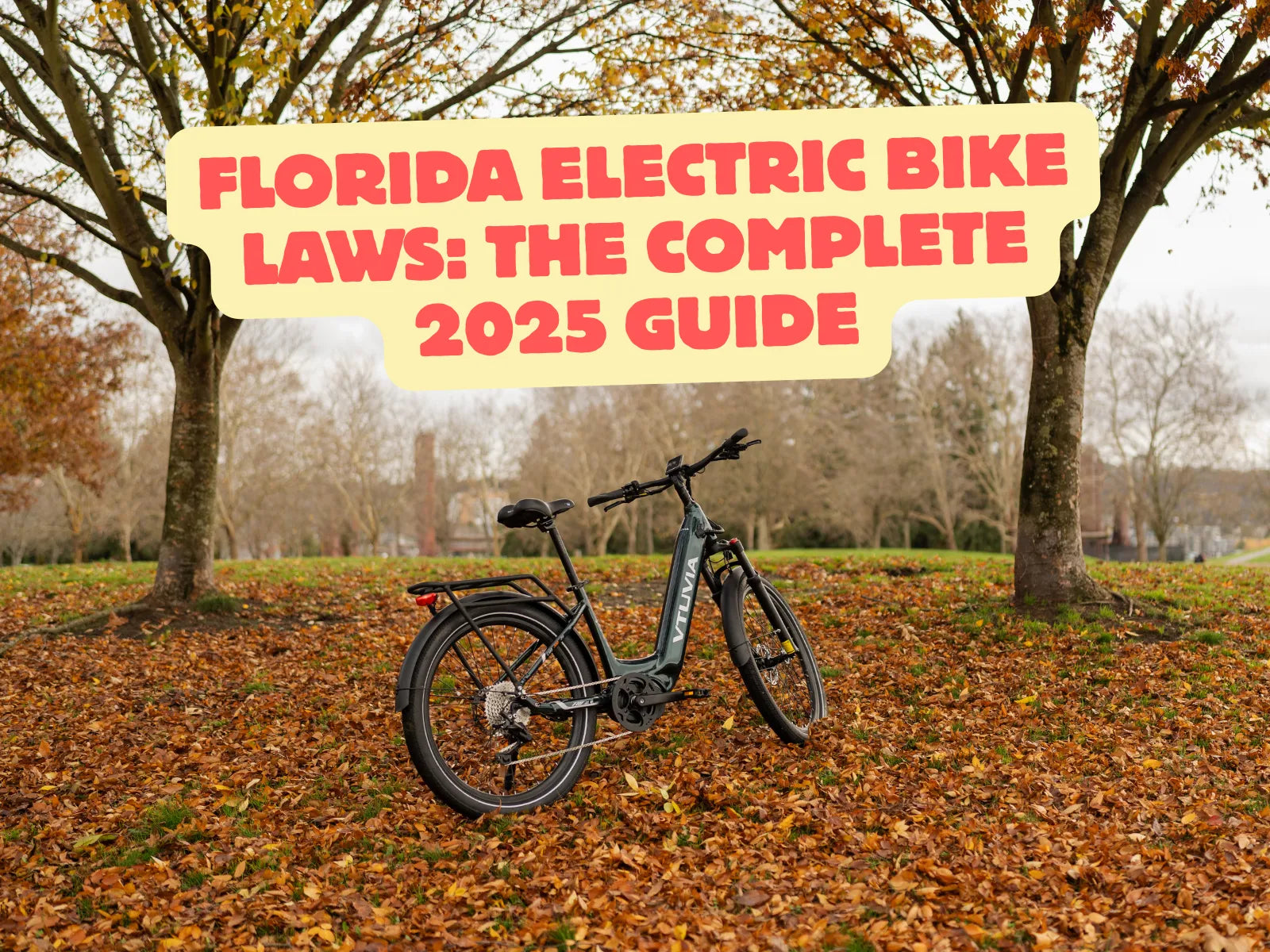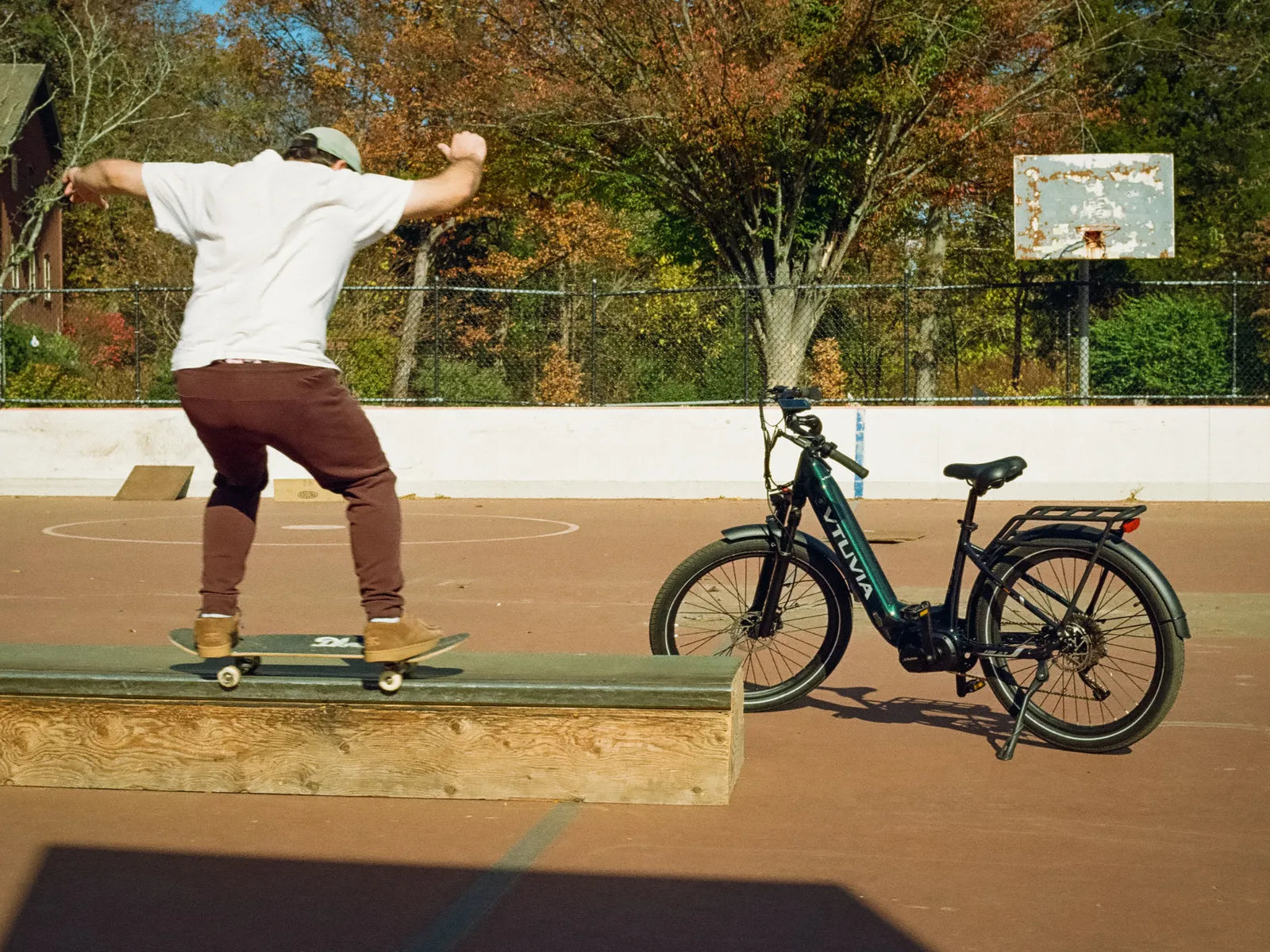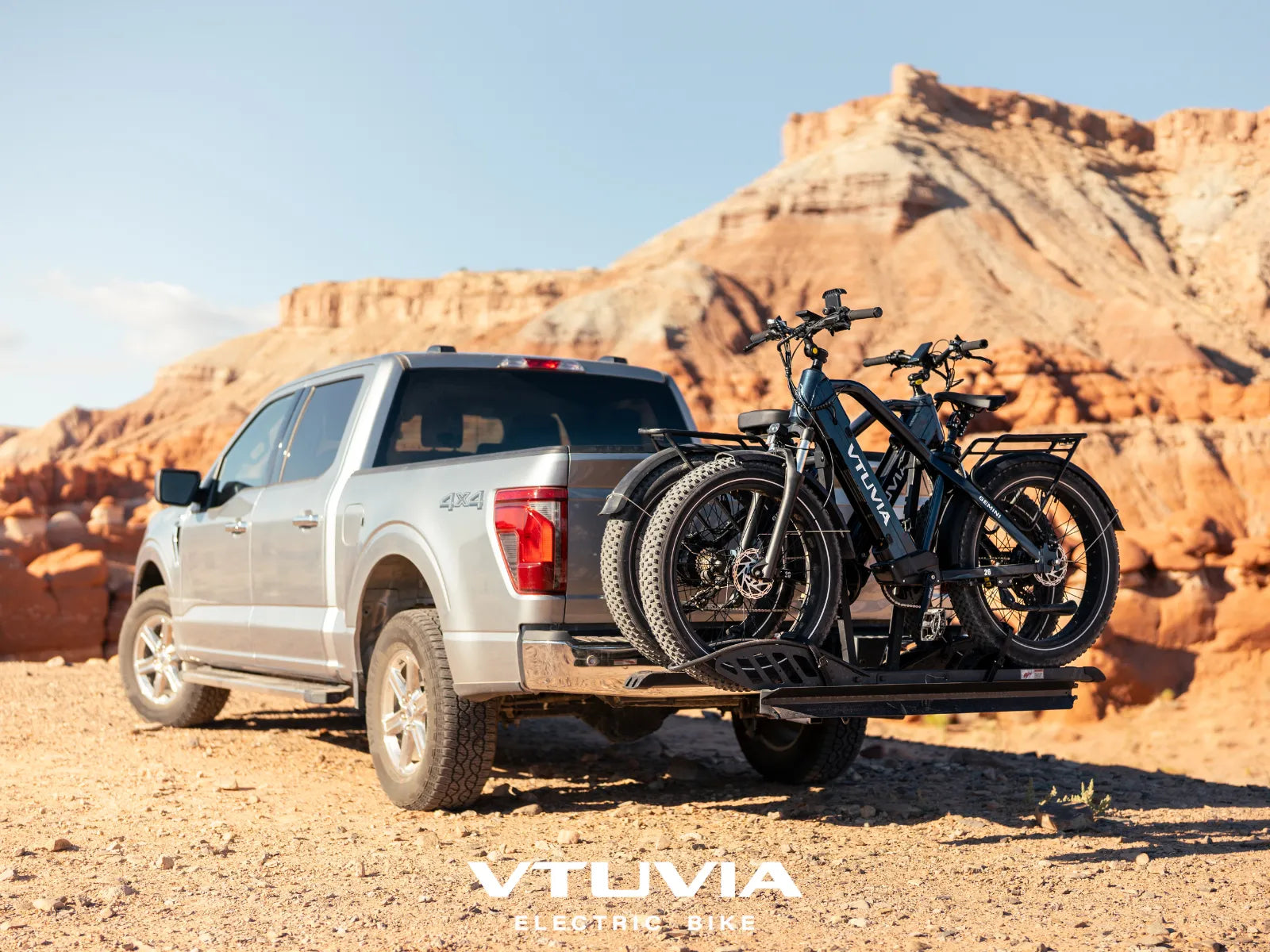A practical, safety-first walkthrough: legal considerations, compatibility diagnostics, components & tools, a detailed analog-throttle installation example, troubleshooting, and safer alternatives.
Table of Contents
3. Class-1 eBike Throttle Legality
5. Step-by-Step Installation Guide
5.1 Removing Existing Components
6. Common Issues and Troubleshooting
Executive summary
Technically yes — many Class-1 (pedal-assist) eBikes can accept a throttle. Practically, adding one changes the bike’s class, may void warranties or local trail access, increases battery load, and introduces safety and legal risks. Read the Legal & Safety and Compatibility sections carefully before attempting any modification. If you proceed, follow the step-by-step instructions, use quality parts, add safety interlocks (brake cutoffs & fuses), and test thoroughly.
- If you need throttle for medical or mobility reasons — contact the manufacturer or a professional shop first.
- If you ride trails/paths — check local rules: throttle may remove access.
- If your controller lacks a throttle input or uses CAN with proprietary firmware — DIY will be difficult or impossible; consider buying a Class-2 bike.
Why this matters — Classes, access & expectations
eBike classes exist to standardize capabilities and access rules. Changing a bike’s capability changes how it is treated by parks, trails, and sometimes by law enforcement.
Quick class primer
| Class | Main characteristic | Top speed (typical) | Throttle? |
|---|---|---|---|
| Class 1 | Pedal Assist (PAS) only | Up to 20 mph | No |
| Class 2 | Throttle + PAS | Up to 20 mph | Yes |
| Class 3 | PAS only, higher speed | Up to 28 mph | No (usually) |
Consequences of adding a throttle
- Classification change: Capability defines class — installing a throttle often makes the bike Class-2.
- Access & legal: You may lose permission to ride on Class-1-only trails and paths; some jurisdictions restrict throttles.
- Warranty & insurance: Manufacturers or insurers may void coverage for modified vehicles or deny claims.
- Safety & handling: Sudden throttle application changes balance; brake systems & frames were designed for certain loads.
Should you add a throttle? A decision matrix
Answer these in order — if any answer is “no”, seriously reconsider or choose a different path.
- Do local laws/parks allow throttle eBikes where you ride? (Check municipal parks, state parks, and local ordinances.)
- Have you checked the bike’s warranty terms & manufacturer guidance about modifications?
- Is the controller accessible and documented (pinouts, model)?
- Can you implement required safety features (fuse, brake cutoffs, waterproof connectors)?
How throttles work — technical background you must understand
Throttle types & electrical signals
- Physical types: thumb, twist, button. Choose one that fits ergonomically with your controls and gear shifters.
-
Signal types:
- Analog voltage (most common) — throttle outputs a voltage (e.g., 0.8V to ~4.2V) proportional to throttle position. Controller reads this on a throttle input pin.
- PWM (pulse-width modulation) — less common; requires controller support.
- CAN/UART — modern systems may send throttle over a digital bus; these are not simple analog inputs and are often locked to OEM devices.
- Brake cutoff: safe installations wire brake switches to a controller input so the motor is cut when brakes engage.
Controller, motor, battery basics
The controller is the brain. It accepts throttle/PAS/brake inputs and commands the motor. Key points:
- Controller inputs: look for labeled connectors: 5V, GND, throttle (or “VT”/“POT”), PAS, brake
- Motor type: hub motors and mid-drives respond similarly to throttle inputs but mid-drives rely on driveline load; high torque use can stress components.
- BMS & battery: throttle use often increases peak current draw — ensure battery/BMS can handle it (check continuous and peak current ratings).
Compatibility checklist — Step zero
Before buying parts or opening anything, confirm these items:
- Controller model & manual: ideally you can find a datasheet that shows a throttle input or pinout.
- Connector access: can you access the controller plug (not buried or potted)?
- Electrical signaling: is throttle input analog (0.8–4.2V) or CAN? If CAN only, DIY throttle is usually not feasible.
- Battery capability: confirm battery continuous & peak discharge (A) to ensure throttle use won’t trigger BMS or overheat wiring.
- Physical space & mounting: is there room on handlebars for a throttle without interfering with other controls?
Parts & tools — what you’ll need (recommended specs)
Throttle hardware
- Thumb or twist throttle with linear 0.8–4.2V output (choose IP67 sealed unit).
- Length: 1–2m cable or extension; avoid thin flex cables that may break.
- Quality brands or OEM-spec throttles recommended — avoid cheap unmarked units.
Wiring & protection
- Wire: 18–22 AWG signal wire for throttle, 14–12 AWG for power if you add any power feed (usually not needed for throttle).
- Waterproof connectors: 3-pin IP67 90° plugs or industry connectors (SM, JST not ideal for exterior use).
- Inline fuse: sized for expected max motor draw (example below for sizing).
- Shrink tubing, dielectric grease, cable ties, adhesive mounts.
Tools & PPE
- Multimeter (DC voltage & continuity)
- Soldering iron and heat-shrink tubing (or quality crimp connectors)
- Wire strippers, crimper
- Insulated gloves, safety glasses
- Torque wrench for re-checking fasteners
Inline fuse sizing (quick guide)
This gives an approximate approach — adapt to your motor & battery specs.
- Find battery continuous and peak current ratings. Example: battery continuous 25A, peak 60A.
- Choose a main inline fuse that protects wiring and battery from sustained excessive current; typically between continuous and peak (e.g., 35–45A) depending on cable & battery capability.
- For throttle wiring itself no fuse is normally required (throttle is a low voltage signal). But motor power must be fused on the battery positive line.
Step-by-step installation — Analog throttle example (most common DIY path)
This section walks a competent DIYer through installing an analog voltage throttle on a compatible controller. Read everything before starting and understand every step.
Pre-installation checklist
- Controller pinout known and throttle input identified.
- Spare photos of original wiring and connectors taken.
- Inline fuse and a clearly labelled kill switch available.
- Brake cutoffs or compatible brake levers on hand.
Step A — Locate controller & identify pins
Open the controller enclosure or find the main wiring harness. Look for the throttle plug — often a 3-pin connector labelled TH, Vref, or similar. Typical pin names:
| Pin | Typical function | Expected voltage |
|---|---|---|
| 5V (Vref) | Throttle supply reference (sometimes) | ~5V DC |
| GND | Signal ground | 0V |
| Throttle signal | Analog voltage from 0.8–4.2V | 0.8–4.2V (at open circuit) |
Step B — Confirm signal with a multimeter
- Set multimeter to DC volts.
- Reconnect battery temporarily to test (do this only after you are comfortable; keep bike secured on stand).
- Probe the suspected throttle signal pin while moving a known good throttle (or simulate with variable bench supply). Observe voltage range (should vary smoothly from ~0.8 to ~4.2V).
Step C — Mount throttle & run wiring
- Choose ergonomic spot on handlebar (usually left or right thumb area).
- Route cable along frame using cable ties; avoid chainstays, hot motor areas, or pinch points.
- Use waterproof connectors or weatherproof the solder joints with shrink + silicone sealant.
Step D — Wire brake cutoffs & interlocks
Install brake lever sensors or wire into existing brake cutoff inputs so that applying brakes disconnects motor immediately. This often uses a simple open/closed switch wired to the controller brake input.
Step E — Final wiring & fuse
- Install inline fuse on the main positive battery feed if not present (value based on battery & motor as earlier).
- Reconnect battery and test with bike on a stand at low throttle percentages.
Initial tests (on stand)
- Test throttle response slowly, observe motor behavior.
- Check for excessive noise, vibration, or heat.
- Apply brakes — motor should cut immediately.
- After 5–10 minutes, recheck connectors and temperature at controller & motor.
Road test protocol
- Perform initial on-road test in an open area at low speeds (walk, 5–10 mph).
- Verify smooth engagement and braking under throttle use.
- Run a 5-10 mile test ride monitoring range & feel. Check connectors after.
Advanced compatibility: CAN, external controllers & firmware
Modern eBikes increasingly use CAN bus for display, throttle and motor communication. If your bike uses CAN or a proprietary protocol:
- You may not be able to add a simple analog throttle.
- Options include an external controller module (a second controller that speaks analog to a throttle and relays commands to motor) — but this is complex and can degrade integration.
- OEM firmware or encrypted CAN prevents third-party devices from integrating without vendor support.
If in doubt, consult the bike manufacturer or an experienced eBike technician who can test bus traffic with a CAN analyzer.
Troubleshooting guide — common problems & checks
Throttle not responding
- Check GND & Vref presence with multimeter.
- Confirm voltage increases when throttle applied (0.8→4.2V).
- Verify connector pin order — some controllers use different pin ordering.
Motor surges or jerky behavior
- Poor signal (noisy wiring) — re-route and shield signal wire; check solder joints.
- Wrong signal type (PWM vs analog) — confirm controller expectations.
- Controller configuration may need throttle curve tuning.
Range drop
Throttle use increases energy draw. Typical ranges drop depend on throttle usage; expect 20–50% reduction if using throttle heavily. See the Range example table below for a quick estimate.
Overheating & cutouts
- Check current limiting by BMS; a too-aggressive fuse can cause cutoff.
- Monitor motor & controller temps after extended throttle use; pause if >70°C.
| Symptom | Likely cause | Fix |
|---|---|---|
| Throttle no output | Wiring/pin mismatch | Confirm pinout; test continuity |
| Intermittent cutout | Loose connector/overheat | Secure connectors; test under load |
| Reduced range | Higher average current | Limit throttle use; increase battery Wh |
Maintenance & long-term care
After modification perform these periodic checks:
- Monthly: inspect throttle cable, connectors, and brake cutoff switches for corrosion or play.
- Quarterly: check inline fuse, solder joints, and cable routing for chafe.
- Annually: have a shop perform a full electrical/system check if you ride often with throttle.
Legal & safety obligations — templates and how to check
Important legal note: Laws vary by state, country and even park. This guide does not provide legal advice. Always verify locally before modifying a bike.
Common legal pitfalls
- Classification is capability-based: Even if you disable the throttle, the bike’s capability can be assessed by officials.
- Trail managers: Many state parks disallow throttles to preserve access for non-motorized users.
- Insurance claims: modifications can be a ground for denying claims if modification contributed to incident.
Alternatives & safer options
If after review adding a throttle seems unwise or impossible, consider:
- Factory Class-2 bike: buy a purpose-built throttle bike with warranty and documented compliance.
- PAS tuning: some controllers allow adjusting PAS sensitivity/assist curve for easier starts.
- Mechanical changes: lower gearing or lighter tires to make starting and climbs easier.
- Electric trailer or cargo assist: adds power for loads without changing bike class.
- Authorized conversions: some vendors provide certified throttle retrofit kits that respect warranty/standards — ask OEM or local dealers.
Debunking myths & common misconceptions
- Myth: “Installing a throttle is always illegal.” Reality: Legality depends on location and intended use — sometimes allowed on private property or certain roads.
- Myth: “Throttle won’t reduce range.” Reality: Throttles increase continuous current draw and typically reduce range significantly.
- Myth: “You can always add a throttle to any eBike.” Reality: Many modern systems use CAN or proprietary protocols that make simple analog throttle additions impossible.
Recommended parts & example suppliers
Look for trusted brands and product reviews. The following are example part types to search for (do not rely on unbranded cheap parts):
- IP67 sealed thumb/throttle (0.8–4.2V linear) — small reputable eBike parts shops or established cycling electronics suppliers.
- Waterproof 3-pin connectors with keyed housings.
- Inline ANL/midi fuses sized to battery/motor rating.
Troubleshooting quick reference (cheat sheet)
| Problem | Check | Action |
|---|---|---|
| No throttle response | Throttle signal voltage; continuity | Rewire pins; replace throttle if dead |
| Jerky motor | Signal noise; ground loop | Re-route cable; add ferrite bead; shield wire |
| Brakes don’t cut | Brake switch wiring | Confirm proper wiring to brake input; adjust switch polarity |
| Range lower than expected | Riding style & throttle % use | Limit throttle use; consider larger battery |
Case studies & real world examples
Case A — Simple retrofit success: A commuter bike with documented controller and analog throttle input added a thumb throttle plus brake cutoff. Result: smoother starts, ~25% range drop when using throttle intermittently. No warranty issues because owner accepted modification and used only on private roads.
Case B — CAN locked system: Owner tried to add analog throttle to a modern OEM bike whose display and controller used CAN messages. Throttle had no effect and attempts to hack CAN resulted in a bricked display. Lesson: identify bus type before proceeding.
FAQs
- Q: Will adding a throttle make my eBike illegal to ride on the road?
- A: Not usually on public roads — many roads allow Class-2 eBikes. The problem is with trails and bike paths that restrict throttles. Always check local rules.
- Q: Will adding a throttle void my warranty?
- A: Often yes. Modifying wiring or adding non-OEM parts is a common warranty exclusion. Confirm with manufacturer.
- Q: How much range will I lose?
- A: It depends on throttle usage. Light, intermittent throttle use may reduce range 10–25%. Heavy throttle use can reduce 30–50% or more. Use the Wh/mile conversion to estimate (pack Wh ÷ Wh/mile = miles).
- Q: Is a professional install better?
- A: Yes — professionals can verify compatibility, implement robust sealing & fusing, and validate safety features. For many modern bikes, professional service is strongly recommended.
Conclusion — Responsible modification & best practice
Installing a throttle is technically straightforward on some bikes and impossible or inadvisable on others. The critical first steps are: check legality, confirm controller compatibility, and plan for safety features (fuse, brake cutoffs, durable connectors). If you value trail access, warranty, or insurance protection, seriously consider factory Class-2 options or authorized conversions. If you proceed with DIY, follow the step-by-step instructions, use quality components, test thoroughly and document everything.
If you’d like, I can generate a downloadable wiring diagram PDF, a printable pre-install checklist, or a parts list tailored to a specific controller model — tell me the controller model and I’ll draft the wiring map for that board.





Share:
Top Step-Through Electric Bike for 2025: Meet the VTUVIA Zeal LT7
24 Hours of Endurance — How the SF20H Supported a Record Challenge in Belvidere